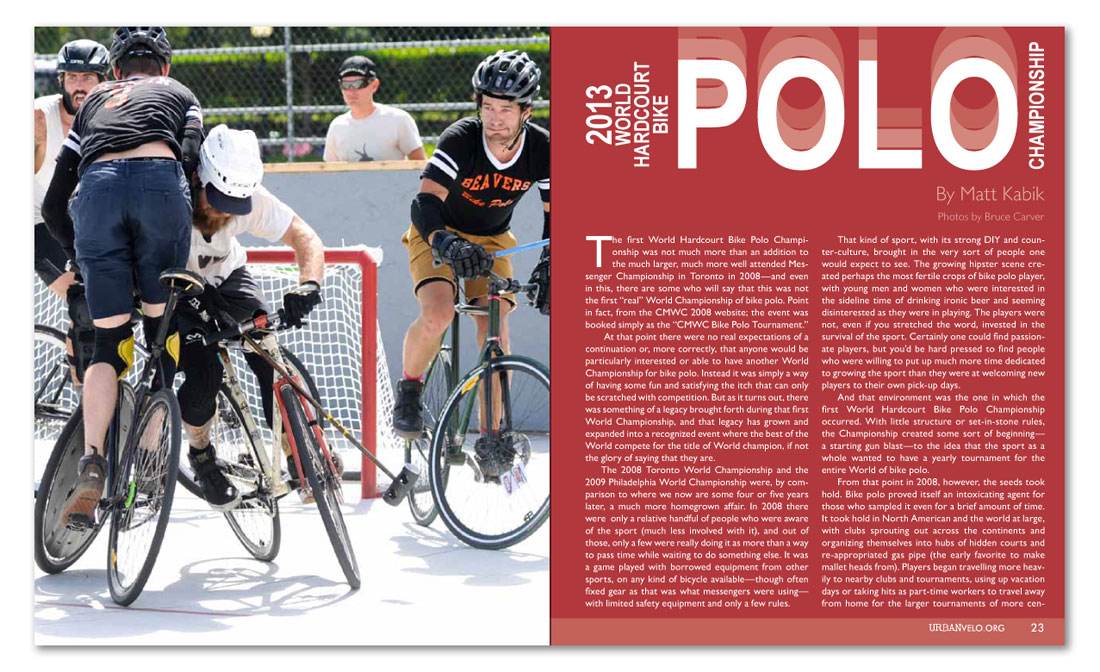


2013 World Hardcourt Bike Polo Championship
By Matt Kabik
Photos by Bruce Carver
The first World Hardcourt Bike Polo Championship was not much more than an addition to the much larger, much more well attended Messenger Championship in Toronto in 2008—and even in this, there are some who will say that this was not the first “real” World Championship of bike polo. Point in fact, from the CMWC 2008 website; the event was booked simply as the “CMWC Bike Polo Tournament.”
At that point there were no real expectations of a continuation or, more correctly, that anyone would be particularly interested or able to have another World Championship for bike polo. Instead it was simply a way of having some fun and satisfying the itch that can only be scratched with competition. But as it turns out, there was something of a legacy brought forth during that first World Championship, and that legacy has grown and expanded into a recognized event where the best of the World compete for the title of World champion, if not the glory of saying that they are.
The 2008 Toronto World Championship and the 2009 Philadelphia World Championship were, by comparison to where we now are some four or five years later, a much more homegrown affair. In 2008 there were only a relative handful of people who were aware of the sport (much less involved with it), and out of those, only a few were really doing it as more than a way to pass time while waiting to do something else. It was a game played with borrowed equipment from other sports, on any kind of bicycle available—though often fixed gear as that was what messengers were using—with limited safety equipment and only a few rules.
That kind of sport, with its strong DIY and counter-culture, brought in the very sort of people one would expect to see. The growing hipster scene created perhaps the most fertile crops of bike polo player, with young men and women who were interested in the sideline time of drinking ironic beer and seeming disinterested as they were in playing. The players were not, even if you stretched the word, invested in the survival of the sport. Certainly one could find passionate players, but you’d be hard pressed to find people who were willing to put up much more time dedicated to growing the sport than they were at welcoming new players to their own pick-up days.
And that environment was the one in which the first World Hardcourt Bike Polo Championship occurred. With little structure or set-in-stone rules, the Championship created some sort of beginning—a starting gun blast—to the idea that the sport as a whole wanted to have a yearly tournament for the entire World of bike polo.
From that point in 2008, however, the seeds took hold. Bike polo proved itself an intoxicating agent for those who sampled it even for a brief amount of time. It took hold in North American and the world at large, with clubs sprouting out across the continents and organizing themselves into hubs of hidden courts and re-appropriated gas pipe (the early favorite to make mallet heads from). Players began travelling more heavily to nearby clubs and tournaments, using up vacation days or taking hits as part-time workers to travel away from home for the larger tournaments of more cen-